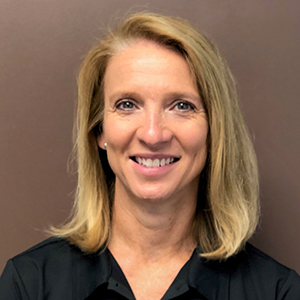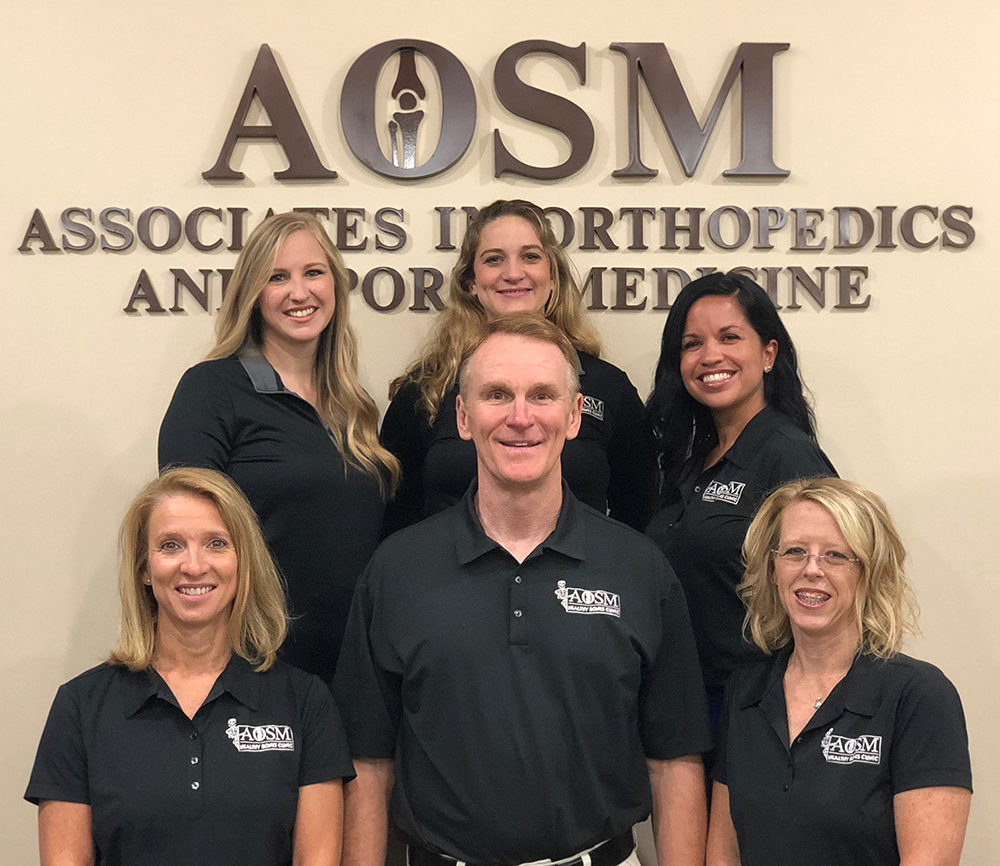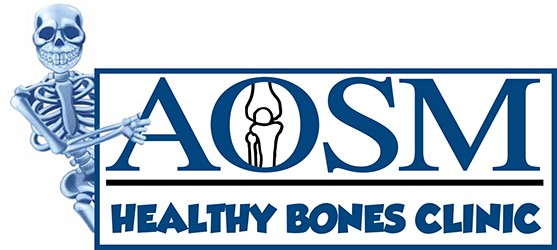What is Osteoporosis?
Osteoporosis is a bone disease in which the mesh-like structure inside the bone becomes damaged. It literally means "porous bones."
The bone structure may be thin if either too much bone tissue has been lost or if not enough bone tissue has been made. When the internal strands
of the bone become too thin (lose density), the bones become weak and can fracture or break easily.
When a bone with osteoporosis is broken, it is called "Fragility Fracture." Though fragility fractures can occur anywhere in the body,
the most common occurrences are:
- Wrist fractures
- Hip fractures
- Spine fractures
Bone Quality + Bone Density = Bone Strength
What Is The Healthy Bones Clinic?
Welcome to the Healthy Bones Clinic at Associates in Orthopedics And Sports Medicine
We will continually strive to assist you in reaching and maintaining bone health to help prevent fractures. If you are older than 50 and have had a fracture, or if your orthopedist feels you will benefit from a bone health evaluation, our Healthy Bones Clinic will be contacting you.
This website will serve as your guide through the journey. It will help you understand more about osteoporosis and how to minimize the risk of another fragility fracture.
Your active participation and positive attitude will help you reach your destination. Please keep this book close as your "coach" travel along.
This website will give you basic information about maintaining bone health. At no time does this information replace your provider’s advice and others. If you have questions, please call your provider
Meet Our Team
Pam Abernathy, FNP-C
AOSM Healthy Bones Clinic Coordinator
Pam has been a registered nurse in the orthopedic field
for over 25 years and has been a Certified Nurse Practitioner
for 17 of those years. She works closely with Dr. Mitch Frix both
in the clinical and surgical setting. She is an active member of the
National Osteoporosis Foundation and obtained their Fracture
Liaison Service Certificate of Completion. Pam believes strongly in
improving her patient’s quality of life by improving the quality of their bone health.


Our Healthy Bones Liaisons.
The AOSM Healthy Bones Clinic is a care-coordinated, single specialty service offered by the providers of AOSM and under the leadership of Dr. Mitch Frix.

Contact Number, Initial Visit and Helpful Links
Initial Visit
During your first visit, we will review your medical history, the history of your recent fracture, evaluate your risks for another fracture and discuss treatment options.
Questions Your Provider May Ask
- Have you had a bone density test before? If so, please let us know when it was done, and bring a copy for our records
- Have you ever been told you have bone loss, osteoporosis or osteopenia?
- Do you take calcium or vitamin D supplements?
- Have you had any other broken bones after age 50?
Follow Up Visits
You will be scheduled for a follow-up one to three months after your initial visit. At that time, your provider will help evaluate your treatment and continue the planning process of care.
Helpful Links
National Osteoporosis Foundation:
www.nof.org
National Bone Health Alliance:
www.nbha.org
Associates In Orthopedics & Sports Medicine
Healthy Bones Clinic: 706-226-5533
Ask for Sabrina Jackson or Brittany Walker
Physical Exam, Lab Work and Bone Screening
To understand your current bone health, your provider will use a combination of the following methods:
Medical History
Your provider will ask you questions in order to obtain a thorough and accurate medical history. In particular, you will be asked questions relating to any personal history of fracture, family history of fracture and other risks of fractures for osteoporosis. It is important to let your provider know the medications you have been taking during the last 10 years because some are known to increase an individual’s risk for low bone mass and fractures.
Physical Examination
Your provider will give you limited physical exam with emphasis on the spine. Many fragility fractures go unnoticed by patients. Loss of height is sometimes an excellent marker for the presence of vertebral fragility fractures.
Laboratory Tests
Some lab tests are specific to bone health. We will check your medical records to see if any of these have been performed in the last six months. If so, we will not repeat the tests. If not, we will need to perform the lab work.
X-rays
An X-ray can help your provider determine if you have had fragility fractures of the spine.
Bone Density Scan
If the above tests indicate probable loss of bone density, we will make arrangements for you to have a bone density scan if one has not been done in the past year. This will help your provider confirm a diagnosis of osteoporosis and document the severity of bone loss.
With most types of bone density tests, a person remains fully dressed. The test usually takes less than 15 minutes. Bone density tests are non-invasive and painless. This means that no needles or instruments are placed through the skin or body. A central DXA uses very little radiation. You are actually exposed to 10 to 15 times more radiation when you fly roundtrip between New York and San Francisco.


